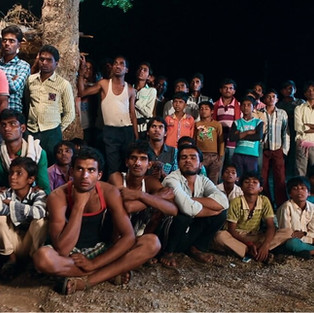How I made it: Kalichaat (2018)
- Divya Sharma
- Jul 29, 2020
- 4 min read
Kalichaat, the hard stone, symbolically represents the sum total of infinite hurdles a farmer in India face in hopes of making his and his family’s life better. It also translates into a labyrinth of complex government procedures and a system promoting hopelessness among the provider of society .

70 Mins | Hindi | Drama | 2018 | India
In its persistent mission and zeal to promote good cinema, Indian Film Institute brings you the experience of Director and Producer of the film - Sudhanshu Sharma
Why did this subject matter to your film?
While growing up, I’ve observed the lives of farmers, especially from the areas depicted in the film, from close quarters. My father was a government officer and was at times posted in rural areas as required by his job. During such postings, the struggles of farmers made an impact on my subconscious mind.
Droughts were common and even when rains were adequate, no proper storage of water for later use made agriculture a difficult proposition. Suicides due to failed crops and mounting loans were not rare.
For someone born and raised in cities, these are non-issues, but I was deeply affected by seeing those poor families suffering. Maybe that’s the reason that when I decided to make a movie, I found the subject close to my heart.
Fact Check: Lot of artists wore used clothes of the farmers to look authentic.
Where did you find this story for this film?
‘Kalichaat,’ the story, is from a short story collection by the same name written by Dr. Sunil Chaturvedi. While going through it, I felt the story just right for a short feature.
Dr. Chaturvedi is a social worker himself and has worked closely with the people of the areas these stories are set in. I requested for his permission to make a film on his story and he was generous enough to allow me not only to use the story but make changes as I feel fit in order to develop a screenplay.
What were the challenges you faced in the making this film?
As any other new filmmaker, everything was a challenge for me. I was passionate and committed but definitely a novice when it came to feature film making. Being a small budgeted effort, money was not the biggest of issues, but completing the entire shoot within 7 days with more amateur than professionals in the crew was a daunting task. However, we learned from every mistake we made and quickly adapted to situations.
Casting was a difficult task in itself, I wanted to keep the feel of the movie as realistic as possible and for that actors were required to speak local dialect. Finding this combination of actors who can speak the local language was tough, but we did manage to find good actors with some efforts.
The story required the shoot to be scheduled in mid summers. Summers in Malwa are dreaded for temperature reaching as high as 48 degrees during May and June, which was the time we shot the movie. The extreme heat did take its toll on activities but luckily we managed to complete the shoot as planned.
Because of budgetary restraints and extreme weather conditions, it was planned to complete the shoot within 7 days. This required extremely meticulous planning beforehand for a super tight schedule, which actually paid off when we managed to complete the shoot as planned. The script, for some scenes, required a crowd of 200+ locals, convincing them to stay calm and behave normal for hours in such heat without finding themselves amused by shooting activities took some effort too.
Did you face any problems in releasing the film?
From the very beginning, I was not targeting a commercial release for the film. I knew the subject is not for mass commercial liking and thus we took the festival route and achieved a more than encouraging response. The film received 18 national and international awards under various categories and about 43 screenings at various film festivals. Such response made us wonder if it should be released on OTT platforms too.
What was your background before making your first film?
Before working on a full-length feature, I had a long experience making various TV shows and commercials. I always found writing the best way of expressing my feelings, mostly in the form of poems and stories.
How do you think filmmakers like you can overcome common challenges like finance and distribution?
Ultimately it’s the quality of the content which sells. If you create something which is of quality, things are bound to happen; especially in this era when theater is not the only portal for audience engagement. It is essentially required to have conviction about your efforts, keeping a systematic approach, doing proper homework before hitting the field, starting in a planned and organized manner, and finally giving 100% while executing those plans.

Kalichaat Producers also published a book called - Film Banti Hai Aur Banati Bhi Hai, where they have shared their experiences of making a film, and various challenges they faced on different stages of production.

How to reach Sudhanshu Sharma
Facebook: https://www.facebook.com/kalichaatfilm
How to Feature your film
If you have made an independent feature film, or a short film, which has won awards at the International Film Festivals, or a film of Social importance, and would like to tell the world how you made it, Indian Film Institute is helping independent filmmakers reach the right audience, and inspiring the next generation of filmmakers. Drop an email to kunal@indianfilminstitute.org for more information.
Follow Indian Film Institute for more resources and industry updates
Its time you explore our online film-making programme called Discover Cinema which has been developed by the Indian Film Institute for people who are exploring filmmaking as a profession.
Learn the basics of Film making from Award-Winning Filmmakers and Film professionals. From Screenplay to Direction, Cinematography to Editing, Short Film making to Festivals. Join us to face the challenges and learn the craft of film making in Six Weeks. Discover Cinema.










Comments